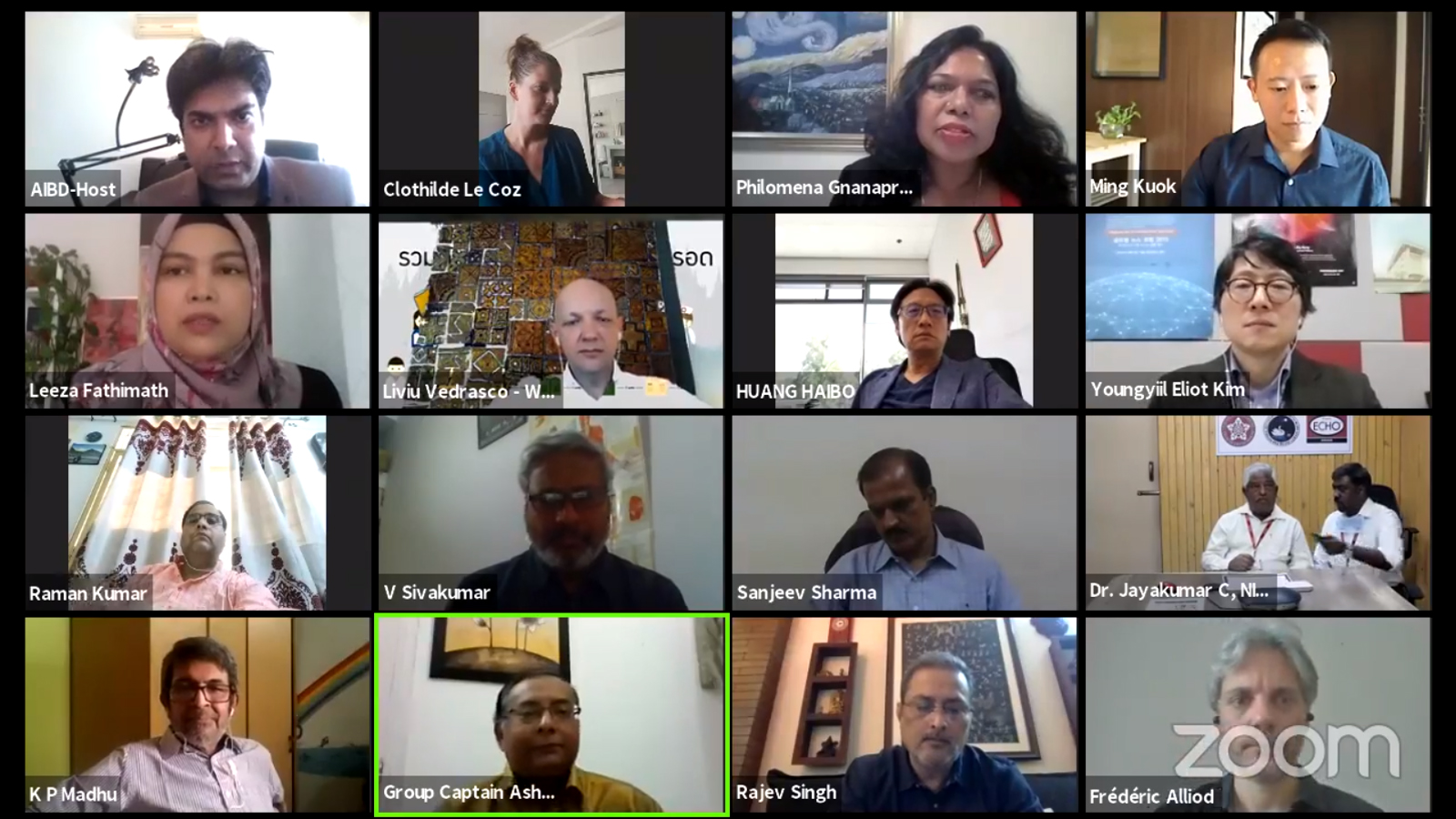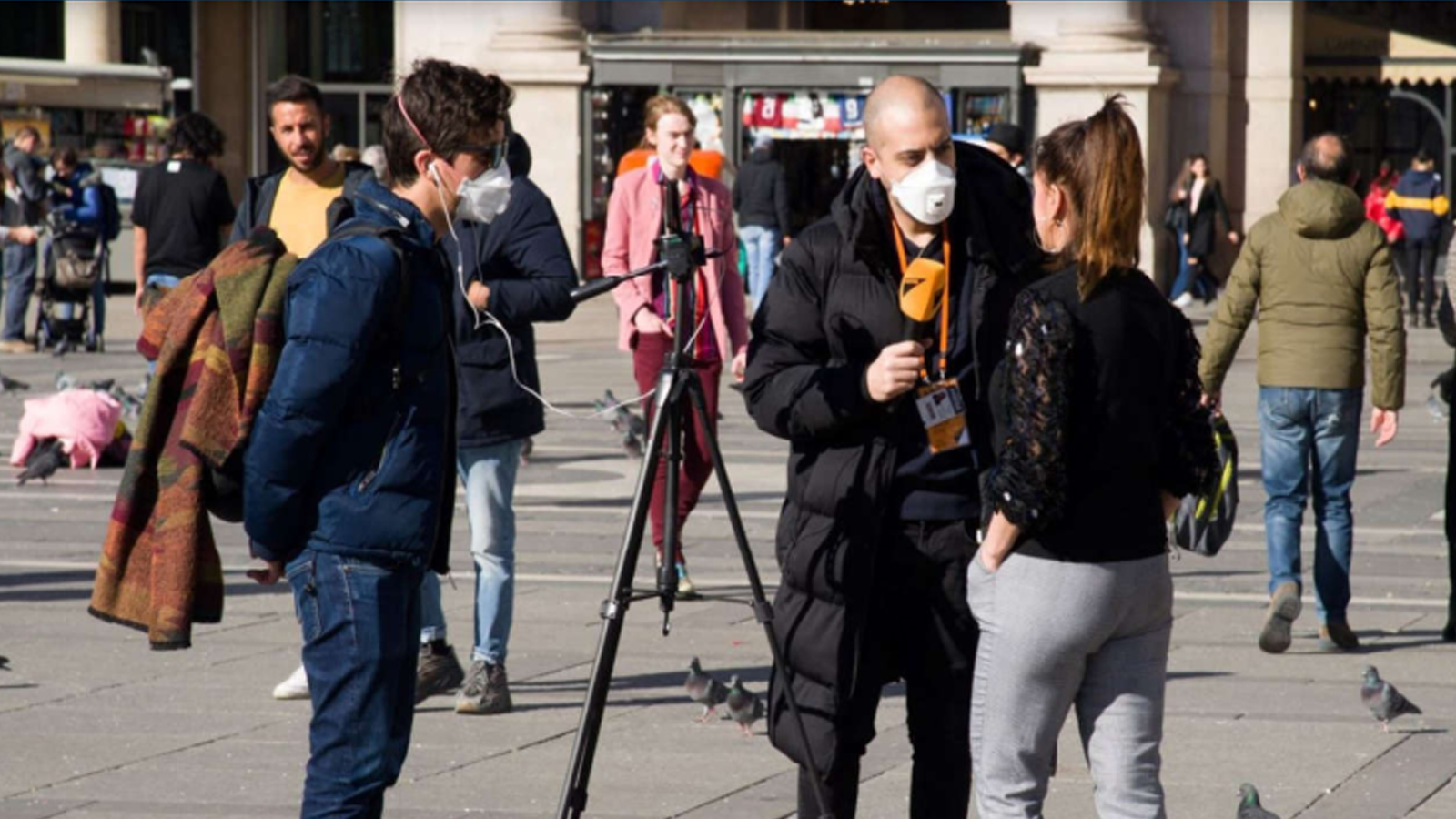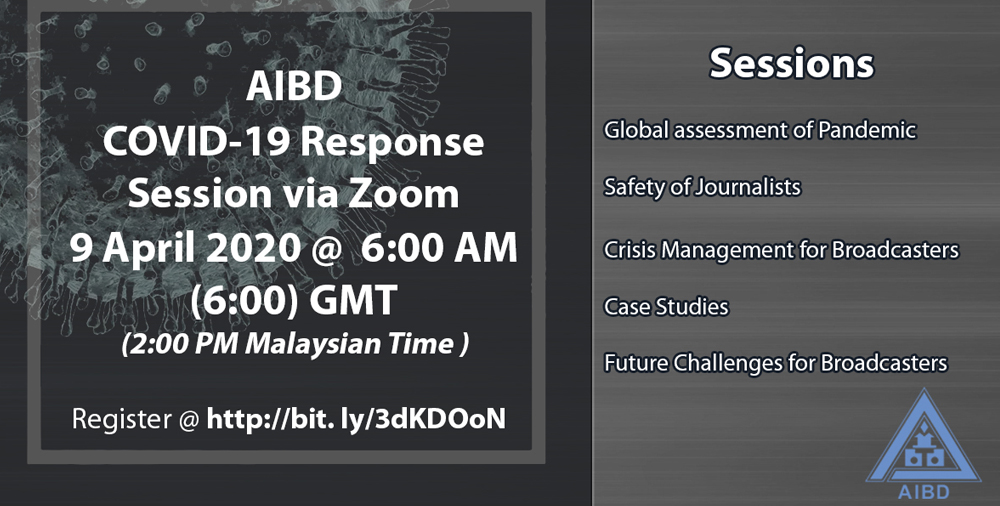In what was the first ever virtual COVID Response Session for media, more than 150 journalists and experts from 24 countries came together virtually to share and learn from each other. The Asia-Pacific Institute for Broadcasting Development (AIBD), as a regional international intergovernmental body, and India’s National Academy of Broadcasting and Multimedia (NABM) organised the Session.

In her opening remarks, the Director of AIBD, Ms Philomena Gnanapragasam, said ‘no one expected that it (pandemic) will last this long’. More than one-third of the world is under lockdown and a Session like this was needed to discuss and share experiences and new ideas. “Along with the health workers, media too are at the frontline of this pandemic,” she said, adding that timely information can not only save lives but also prevent from getting the disease.
The Chief Executive Officer of India’ Public Service Broadcaster, Prasar Bharati, Mr. Shashi Shekhar Vempati, said the responsibilities of the media, especially that of Public Service Broadcasters, have significantly gone up, not only in providing news and information, but also to keep the citizens engaged at home so that the social distancing and lockdown remain effective.
One of the main speakers, Dr. Liviu Vedrasco, WHO COVID-10 Asia-Pacific Liaison based in Thailand, said humanity has not faced such a crisis in the last 100 years. The closest one, he said, was the 1918 influenza pandemic. In this crisis, the ‘whole of society’ must respond, and without that it would be difficult to contain the pandemic, Dr Vedrasco opined.
He highlighted ‘Five Principles’ as the foundation of a United COVID-19 response system. The first one he said was the ‘Whole-of-Society’, in which all governments, businesses, and civil societies must communicate and come together. The second one; there should be ‘Readiness at all levels’. The third one, according to Dr. Vedrasco is an important one; Critical Interdependencies. He said attention must be given to nine critical sectors (Food, Water, Health, Energy, Transport, Finance, Telecom, Law and Order, and Defence), regardless of the level and size of a country. “Failure of one or more of these services can have major economic, health and social consequences”.
The last two ones, equally important, he added, were ‘severity-based response’ and ‘respect ethical norms’ by protecting the vulnerable and disadvantaged sections of the population.
On the role of media during a crisis like this he suggested three distinct areas; to simplify public health authorities’ messages, report on government response and communities reactions, and bring into public consciousness the positive stories of extraordinary solidarity, passion and generosity.
The risk is real, said Dr. Ming-Kuok Lim, Advisor for Communication and Information, UNESCO Office in Jakarta. “The potential of getting infection and infecting others must be considered when reporting from locations,” he highlighted. In a crisis like this the journalists, he added, must familiarise themselves with all the recommendations provided by health officials. The emotional and psychological health while on assignments can emotionally draining, and therefore, the journalists should be aware of their own mental health, he said.
Speaking from the disaster management perspective, Dr. Surya Prakash, Head of Geo-meteorological Risk Management Division of India’s National Institute for Disaster Management (NIDM), said there is a need for international and national collaborations, command and control systems for effective response and recovery. Since there is a lack of international frameworks to manage this criss, he suggested taking advantage of the SENDAI Framework for Disaster Risk Reduction 2015-2030, where 190 countries are signatory to it.
The Assistant Professor at National of Mental Health and Neurosceinces in India, Dr. Jaya Kumar, stressed on the need to incorporate psychosocial counselling and support in a crisis like this where people are forced to stay indoors with minimum interactions. “There should be psychosocial monitoring and helplines created at centre, state and district level,” he suggested.
The Experience Sharing Session
Media experts from Hong Kong, Korea, India, and France shared their experiences on how their Channels and Countries are doing in its fight against the pandemic.
Showing the visuals of how his reporters reported from the where the virus first surfaced, the City of Wuhan, Mr Haibo Huang said it took two days to prepare his team to be sent to Wuhan when China announced the lockdown. He is the Deputy Head of Phoenix Chinese Channel based in Hong Kong. He said during a disaster like this media outlets must take calculated risk, and prepare for almost everything. He said his Channel sent 2 teams to Wuhan and did comprehensive reporting from various locations.
At Korean Broadcasting System (KBS), Dr. Kim Youngyiil, Project Manager of EBU and AIBD, said they have established a ‘Integrated Newsroom’ to respond to COVID outbreak. He said it is an initiative to fight against ‘infodemic’ with special kinds of programming. “There is special live programming called ‘Let’s Fight the Corona Virus, where it goes beyond numbers and statistics”. He added that behind these numbers and statistics are actual people. “We show real people, real faces and deliver strong, powerful and positive messages”.
In India, as Bollywood actors and Cricketers are very popular, the national broadcasters have used them to deliver important messages. The Director General of Doordarshan News, Mr. Mayank Agarwal, said they also instituted daily call-in programmes with medical experts to answer people’s queries and a special COVID-19 tracking shows. The Additional Director General of Doordarshan, Mr P.K Subhash, besides airing information and education campaign materials they have re-introduced some of the very popular TV serials of some 20-30 years back. “We have got huge positive response and our viewership has reached 50 to 60 million,” he added.
In France too, more than 75 percent of the airtime is dedicated to corona virus through information, education and entertainment, said Mr Frederic Alliod, who is a regional attache’ for Film, TV, Radio and New Media in Cambodia, Laos, Myanmar, Thailand, and Vietnam.
In New Zealand, the Prime Minister herself along with relevant officials give press conference every day at a given time, leaving not much room for misinformation, said Dr. Amal Punchihewa, a media consultant (engineer) and an adjunct professor.
The Session was also live streamed on Facebook for those who could not register on time. In some organisations it was projected on a large screen so that more people could follow the Session.

First Ever Virtual COVID19 Sharing Session
In what was the first ever virtual COVID Response Session
COVID-19 Response Session 3 for Top Management
AIBD has been conducting series of COVID Response Sessions for
AIBD COVID Response Session 2: Heads of Organisations & Top Management
The Asia-Pacific Institute for Broadcasting Development (AIBD) organized a series
World TV Awards – Extended Deadline
Due to the unprecedented times and the challenges content creators
COVID-19 Lockdown: Of Transformation and Transfiguration Under Coronization
BY Abdulwarees Solanke, Nigeria Don’t mind my turenci. I’m not about indulging
First ever virtual COVID sharing session
In what was the first ever virtual COVID Response Session
Role of Public Service Broadcasters during pandemic
Amidst COVID-19 pandemic the role of Public Service Broadcasters (PSBs)
Infodemic amidst Pandemic
If there is one thing that is spreading faster than
AIBD COVID-19 Online Response Session
image:AIBD is organising an online COVID19 Response session for broadcasters











